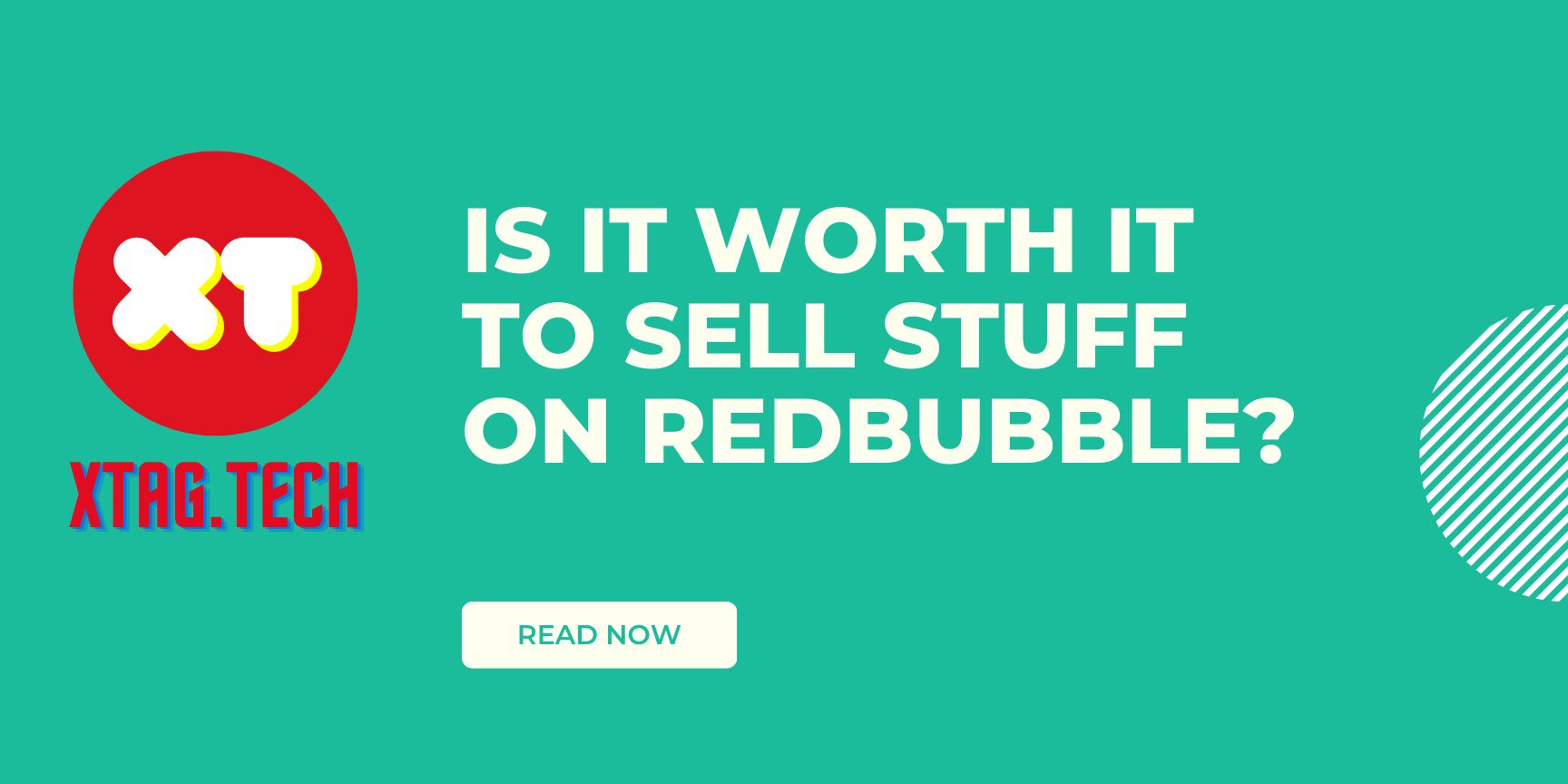In the digital age, numerous online platforms have emerged as a means for artists, designers, and creators to showcase their work and monetize their talents. One such platform is Redbubble, a popular online marketplace that allows artists to upload their designs and sell them as various products, from t-shirts and stickers to home decor and accessories. As with any online venture, selling Stuff on Redbubble comes with its own set of advantages and challenges.
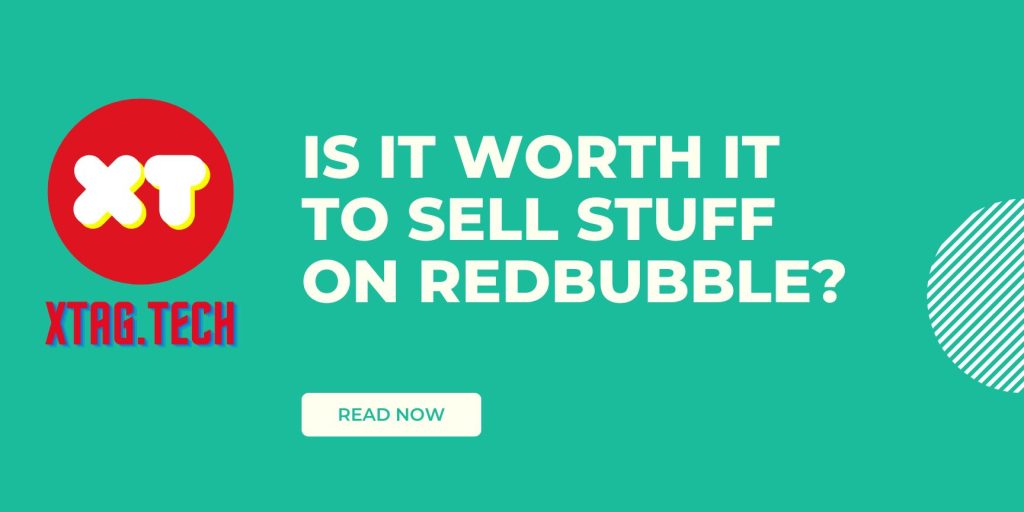
This blog post aims to explore the pros and cons of selling on Redbubble and provide an informative and engaging analysis to help aspiring artists make an informed decision about whether it is worth it to sell their creations on this platform.
Understanding Redbubble
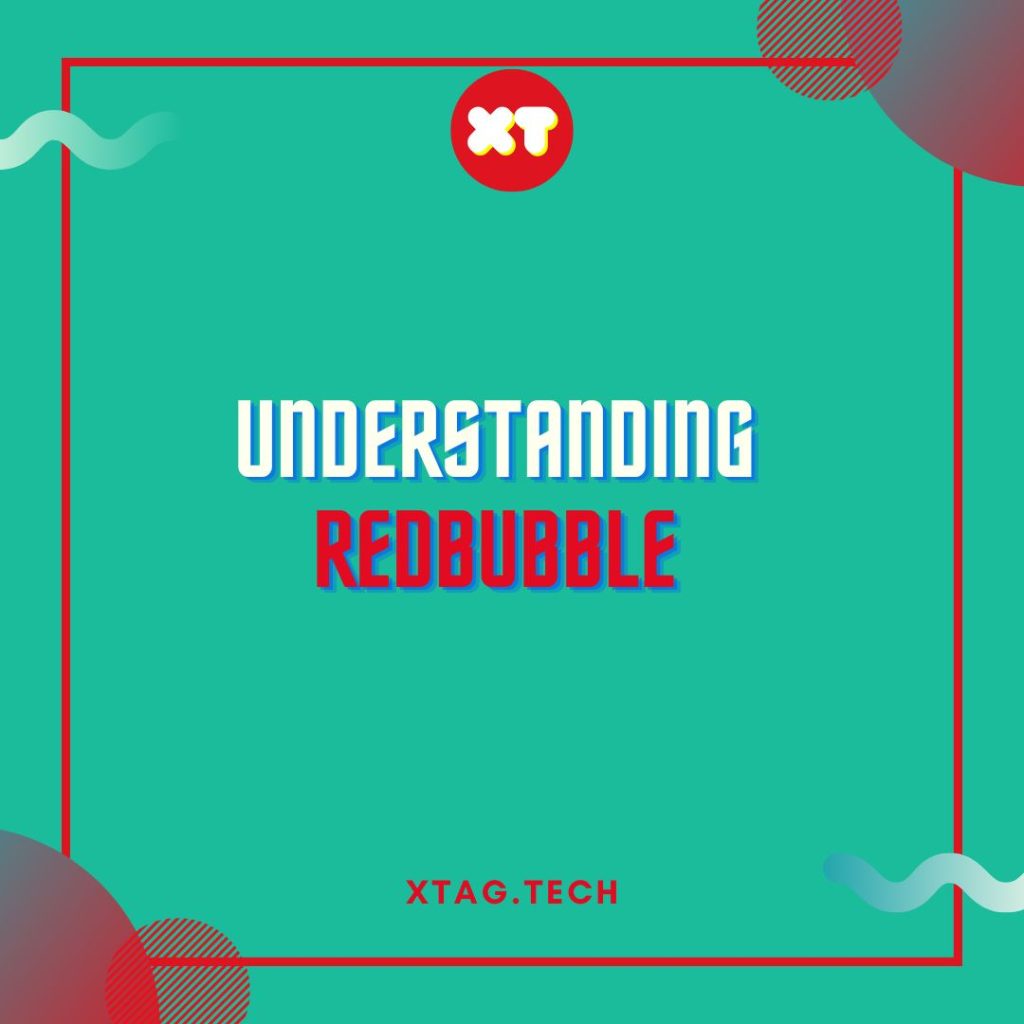
Redbubble is an online marketplace that provides independent artists and designers with a platform to sell their artwork printed on a wide array of products. The platform allows creators to upload their designs, which are then made available to customers who can purchase them as high-quality products. From clothing to phone cases, wall art to home decor, Redbubble offers a diverse range of products for customers to choose from. The company handles the printing, shipping, and customer service, while artists earn a commission on each sale.
What is The Pros of Selling on Redbubble?
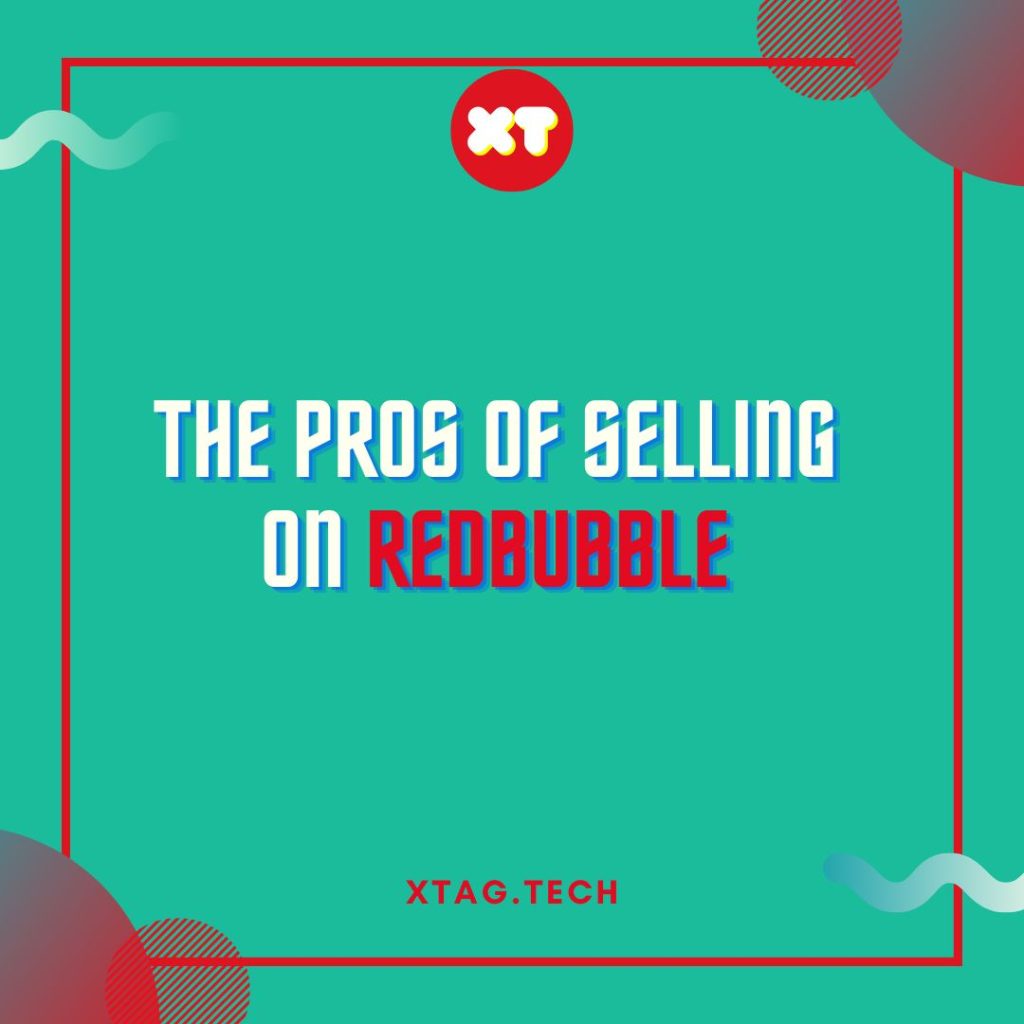
- Global Exposure: Redbubble has a vast global audience, which means that your designs can reach a wide range of potential customers worldwide. This exposure is crucial for artists seeking recognition and sales beyond their local markets.
- No Upfront Costs: One of the significant advantages of Redbubble is that it requires no upfront investment from artists. Unlike traditional print-on-demand setups, where artists need to bear printing and inventory costs, Redbubble takes care of production, packaging, and shipping.
- Diverse Product Range: Redbubble offers a plethora of products to showcase your designs, allowing artists to experiment with various niches and cater to different customer preferences. This diversity helps broaden the potential for sales.
- Passive Income Potential: Once you upload your designs on Redbubble, they remain available for sale indefinitely. This means you have the potential to earn passive income as long as your designs continue to resonate with customers.
- Community and Feedback: Redbubble boasts an active community of artists and designers who can provide valuable feedback and support. Engaging with this community can be inspiring and help you grow as an artist.
What is The Cons of Selling on Redbubble?
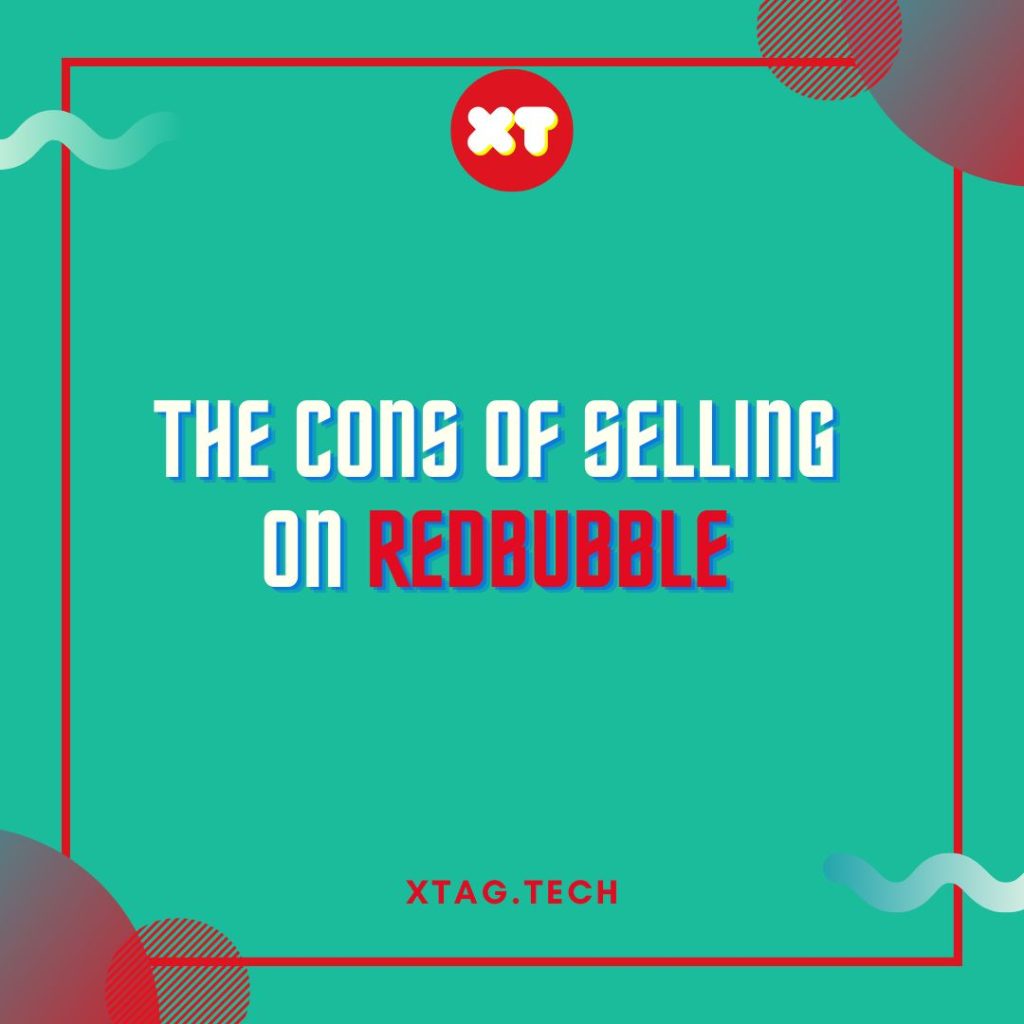
- High Competition: With the ease of entry, Redbubble has become a crowded marketplace, making it challenging to stand out among thousands of other artists vying for attention.
- Limited Profit Margins: While Redbubble handles production and shipping, artists receive a commission on each sale. However, the profit margins may be relatively low, especially when compared to traditional self-fulfillment models.
- Art Theft and Copyright Issues: Some artists have reported instances of their designs being stolen and sold by others on the platform. Redbubble does have policies in place to address copyright infringement, but it can still be a frustrating experience for the original creators.
- Dependency on Platform: When you sell on Redbubble, you are essentially relying on the platform for your sales and income. Any changes to the platform’s policies or algorithms can significantly impact your visibility and revenue.
- Limited Control Over Production: While Redbubble ensures quality printing, artists have limited control over the production process. This can lead to discrepancies in the final product compared to the artist’s original vision.
Is it profitable to sell on Redbubble?
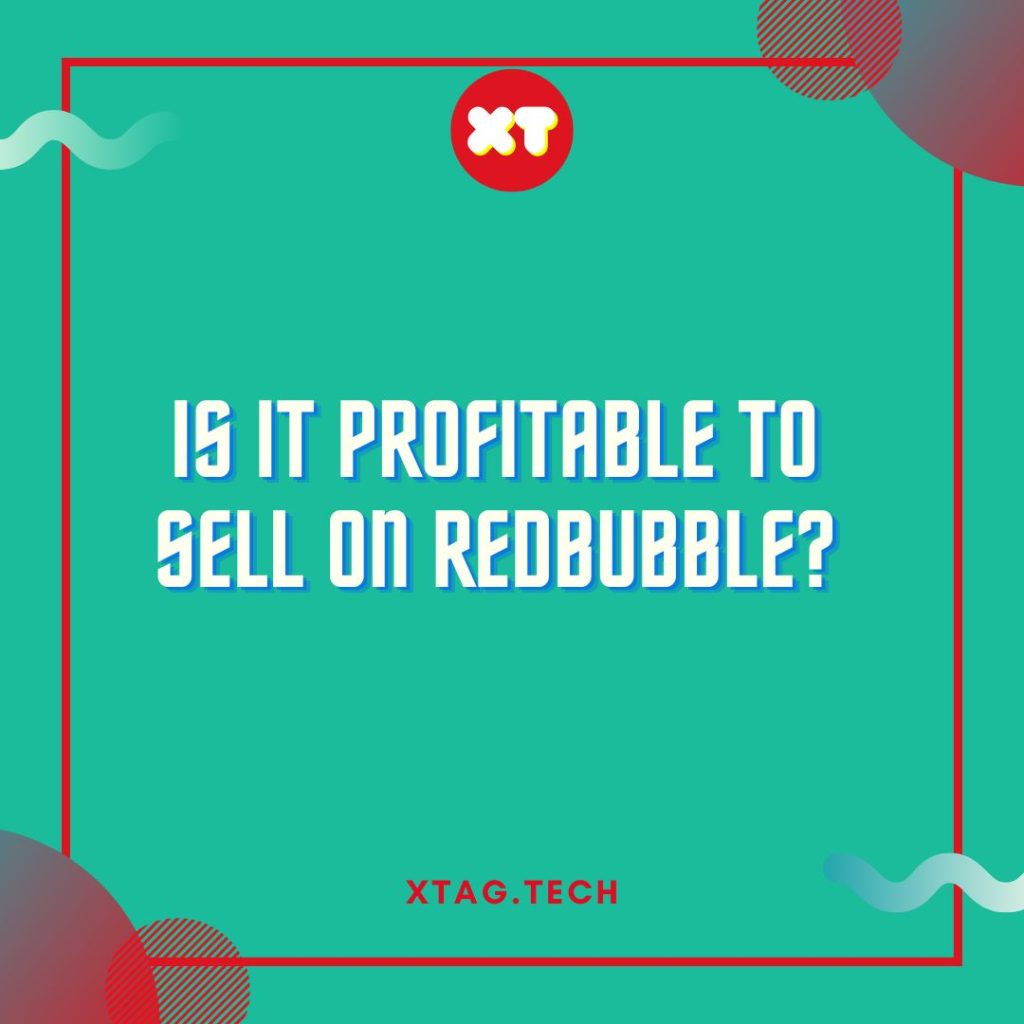
Calculating Potential Earnings
To determine whether selling on Redbubble is profitable, it is essential to understand the earning potential on the platform. Redbubble offers artists a base price for each product, and the artist can set their desired markup. The total earnings from a sale are calculated as the sum of the base price and the markup.
For example, if the base price of a t-shirt is $15, and the artist sets a markup of $10, the total earnings from that sale would be $25. However, it’s crucial to keep in mind that the base prices vary depending on the product and size, and higher markups may deter potential buyers.
Factors Influencing Profitability
Several factors influence the profitability of selling on Redbubble:
- Design Quality and Appeal: High-quality, unique, and appealing designs are more likely to attract customers, leading to increased sales and higher earnings.
- Niche and Trends: Choosing the right niche and staying up-to-date with current trends can significantly impact the demand for your designs.
- Marketing and Promotion: Active marketing and self-promotion efforts can help increase visibility and drive traffic to your Redbubble store, ultimately leading to more sales.
- Seasonal Demand: The demand for certain products may vary seasonally, so adapting your designs to match seasonal trends can boost sales during specific periods.
- Consistency and Volume: Consistently uploading new designs and having a large portfolio can increase your chances of making regular sales.
How much do you actually make on Redbubble?

Case Study: An Artist’s Journey on Redbubble, to illustrate the potential earnings on Redbubble, let’s consider the journey of an imaginary artist named Sarah.
- Step 1: Setting up the Store Sarah signs up on Redbubble and starts uploading her designs. She begins with a modest portfolio of 30 designs, including illustrations, typography, and patterns.
- Step 2: Initial Sales and Growth In the first month, Sarah makes three sales, earning an average of $5 in profit per sale after deducting Redbubble’s base price and printing costs. While her initial earnings may not seem significant, this motivates Sarah to continue uploading new designs regularly.
- Step 3: Expansion and Diversification As Sarah’s portfolio grows to 100 designs in the second month, her sales start picking up. With a broader range of products, including stickers, phone cases, and home decor, Sarah’s average profit per sale increases to $7.
- Step 4: Marketing Efforts Sarah actively promotes her Redbubble store on social media and collaborates with other artists. Her marketing efforts pay off, and her sales see a significant boost. By the third month, Sarah’s average profit per sale reaches $10.
- Step 5: Scaling Up With consistent efforts, Sarah reaches 500 designs in her store by the end of the sixth month. She continuously updates her portfolio with trending designs and maintains strong engagement with her followers. Her average profit per sale further increases to $12.
- Step 6: Passive Income As Sarah’s store gains popularity and she ranks higher in search results, her sales become more consistent. By the end of the first year, Sarah’s Redbubble earnings generate a stable and passive income stream, averaging $500 per month.
How Much Does It Cost To Sell Items On Redbubble?
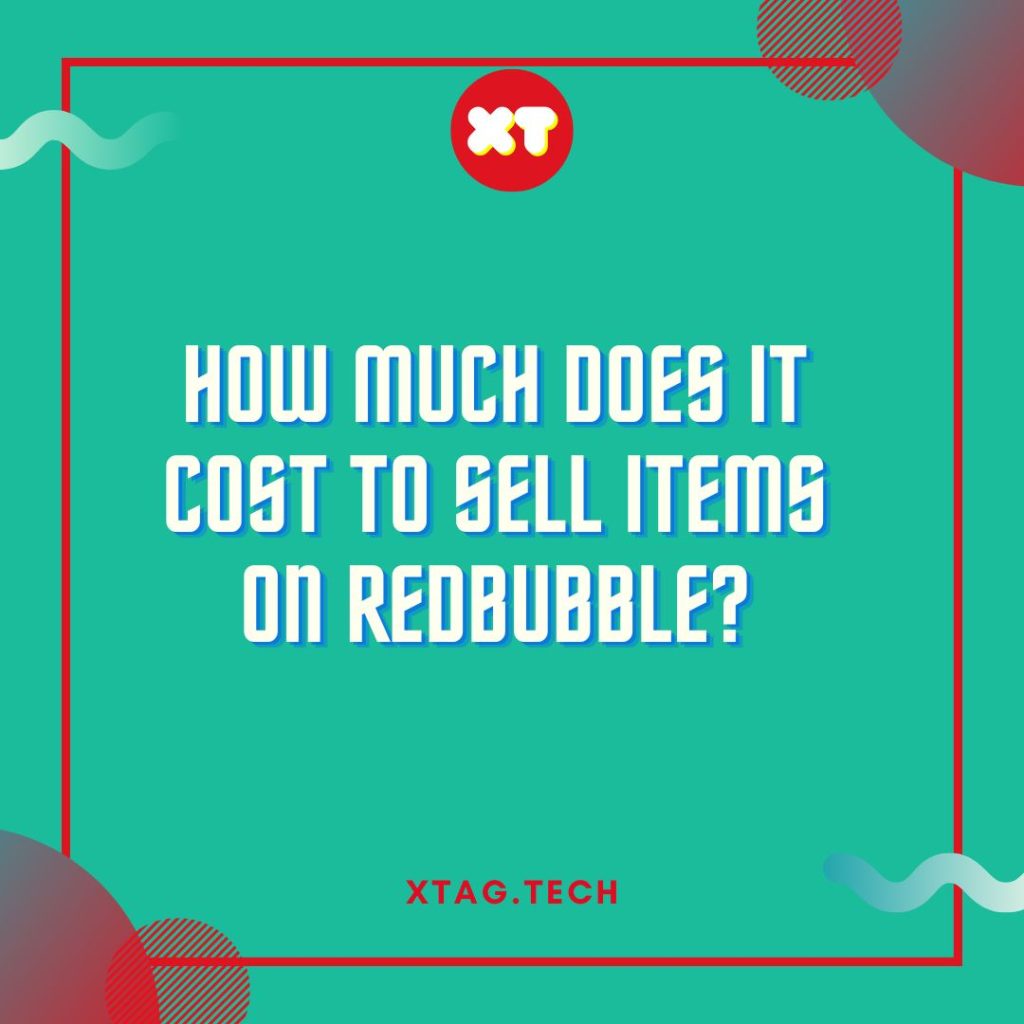
As a print-on-demand platform, Redbubble operates on a business model where artists upload their designs, and the company handles the production, printing, and shipping processes. Artists earn a commission on each sale, which is calculated as a percentage of the base price set by Redbubble, plus the artist’s chosen markup.
Base Price
The base price is the production cost of each product, which includes materials, printing, and Redbubble’s operational expenses. Redbubble sets this price, and it varies depending on the type of product and its size. Artists do not have control over the base price, and it directly affects their potential profit.
Artist Markup
The artist markup is the amount artists add on top of the base price to determine the final selling price. This markup is where artists can determine their desired profit margin. However, setting too high of a markup may discourage potential buyers.
Currency Conversion and Transaction Fees
Redbubble operates worldwide, which means artists may receive payments in various currencies. Currency conversion fees may apply, and artists should consider these when calculating their earnings. Additionally, transaction fees may be levied by payment processors, further affecting the overall income.
Promotional Expenses
While Redbubble handles the platform’s marketing, artists may choose to invest in their own promotional efforts to drive more traffic to their stores. Promotional expenses can include social media advertising, collaborations, or running promotions and discounts.
Time Investment
Selling on Redbubble also demands a considerable time investment. Artists need to create high-quality designs, regularly upload new content, engage with the community, and manage their stores effectively. The time spent can be substantial, especially for artists aiming to build a successful presence on the platform.
Can Redbubble Be A Full Time Job?
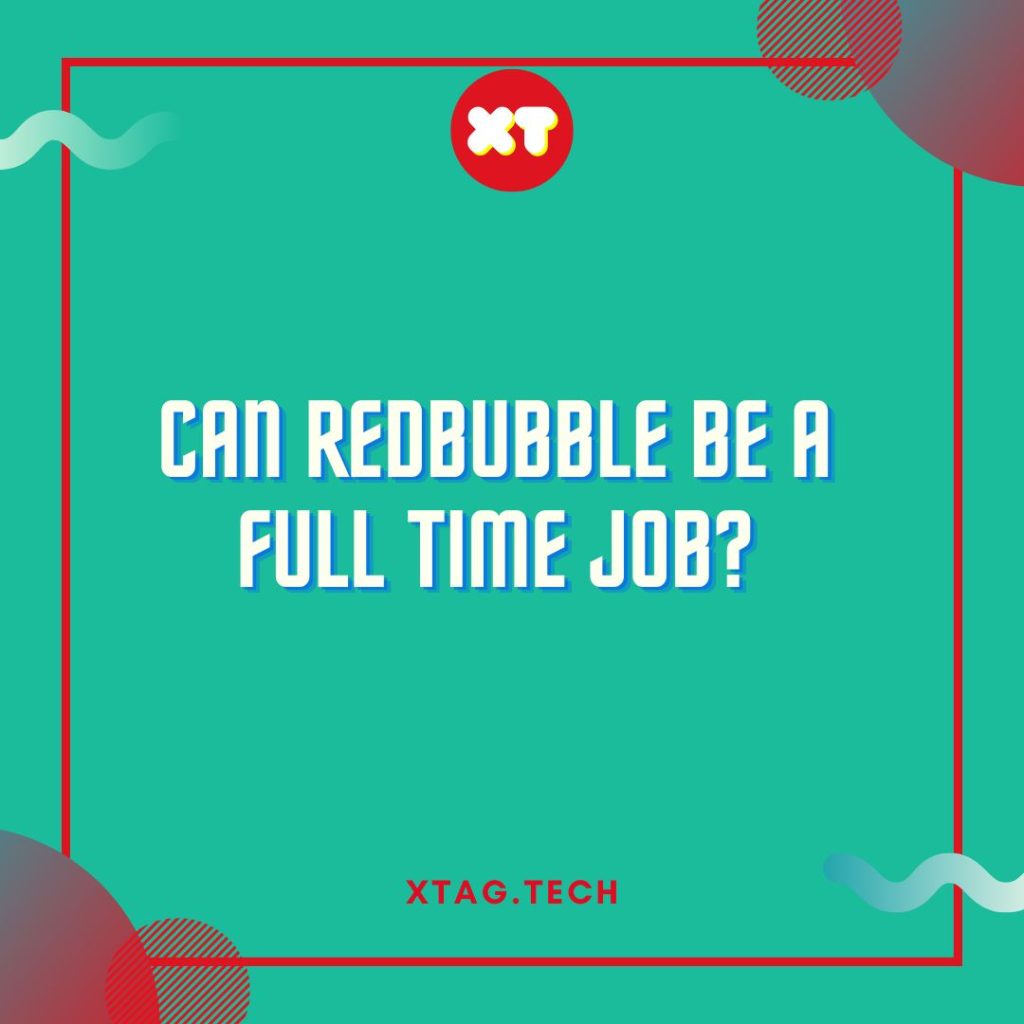
- Analyzing Earning Potential: The allure of turning one’s passion for art into a full-time career is undeniably appealing. While Redbubble offers an excellent platform for artists to monetize their talents, transitioning to a full-time career requires careful consideration and planning.
- Income Variability: The earning potential on Redbubble is highly variable and depends on several factors, including the quality of designs, niche selection, pricing strategy, marketing efforts, and consistency in uploading new content. Income may fluctuate from month to month, making it challenging to rely solely on Redbubble as a stable income source.
- Growth Over Time: Artists should expect slow and gradual growth on Redbubble. Building a following, establishing a reputation, and gaining consistent sales may take months or even years. Patience and persistence are crucial for artists aspiring to make Redbubble their primary income stream.
- Diversification: For those aiming to pursue art as a full-time career, diversifying income streams is essential. Relying solely on Redbubble sales may not be sustainable. Artists can consider other avenues such as freelance work, commissions, art fairs, or selling on multiple online platforms.
- Treating it as a Business: To turn Redbubble into a full-time job, artists must treat it as a business venture. This involves setting clear goals, devising a marketing plan, understanding the target audience, and continuously improving design and promotional strategies.
- Financial Planning: Before making the leap, artists should assess their financial situation and create a safety net to sustain themselves during the initial stages when income might be modest. Having savings and a backup plan is crucial when transitioning to a full-time career on Redbubble.
How To Be Successful On Redbubble?
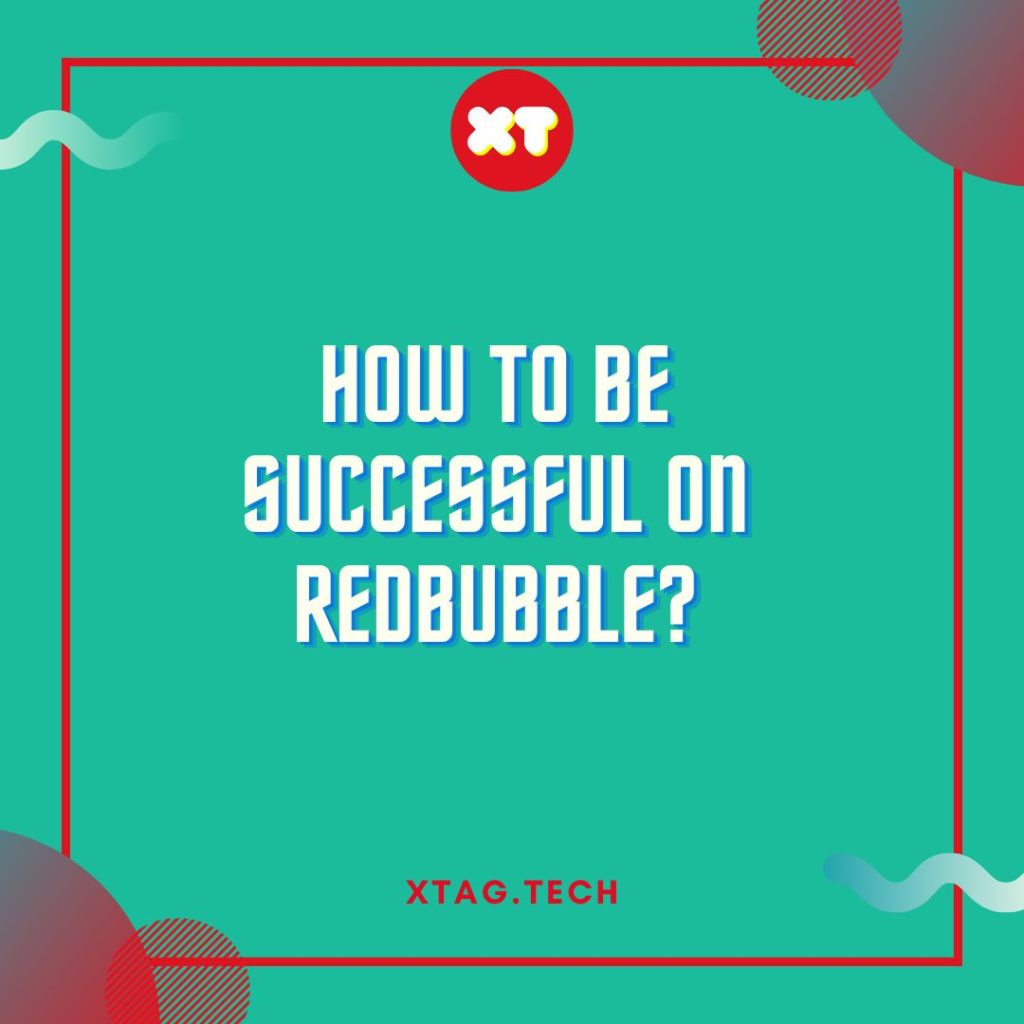
Achieving success on Redbubble requires more than just uploading designs and waiting for sales to roll in. It demands a strategic approach, dedication, and a willingness to adapt to the dynamic marketplace.
High-Quality Designs
Quality is key on Redbubble. Invest time and effort in creating unique, eye-catching, and well-executed designs that resonate with your target audience. Focus on niche-specific designs to cater to specific interests and preferences. When creating your designs, be sure to adhere to our quality guidelines. This will ensure that your work looks great on all products and that it meets our high standards.
In order to produce the best possible designs, take advantage of our various design tools and resources. Our tutorials and tips section can help you get started, and our design forum is a great place to get feedback and advice from other designers. When it comes to promoting your work, be sure to use our effective marketing tools. Our social media tools can help you reach a wider audience, and our merchandising tools can help you sell your work more effectively. Redbubble is a community of artists and designers, and we’re always looking for new talent. If you’re interested in joining us, be sure to submit your work to our gallery. We can’t wait to see what you come up with!
Niche Selection
Identify and explore niches that align with your artistic style and have a dedicated customer base. Catering to specific niches allows you to stand out amidst the competition and build a loyal customer following. There are many different niches to explore on Redbubble.com, but some of the most popular include: musicians, surfers, and dog lovers. If you are an artist who specializes in portraits, you might want to consider targeting the pet lover niche. This would allow you to produce artwork that features animals, which is often popular among pet owners. You could also produce merchandise that features common pet phrases, such as “I love my dog” or “my cat is the best.”
Another popular niche on Redbubble.com is the music community. If you are an artist who specializes in digital art or illustration, you could create merchandise for popular bands or musicians. This could include designing album covers, T-shirts, or posters. You could also create artwork that pays homage to your favorite musicians or bands. For example, you could create a series of illustrations that depict the history of rock music.
Optimize Product Range
Experiment with a diverse product range, but focus on products that suit your designs best. Take advantage of Redbubble’s extensive product offerings, including clothing, home decor, accessories, and stationery. When you create a design, be sure to keep the text and graphics simple. Complex designs can be difficult to reproduce on products, and may not look as good when printed. Be sure to check the product dimensions before you create a design. Some products have specific dimensions that you need to keep in mind.
Pricing Strategy
Find a balance between profit and affordability. While higher markups may offer more significant earnings, overly expensive products may deter potential buyers. Monitor sales data to assess the effectiveness of your pricing strategy. One of the main decisions a designer has to make when selling on Redbubble is what price to set for their products. This decision is important, as it can have a significant impact on both the designer’s earnings and the affordability of their products.
One option is to set a high markup on products, which can lead to significantly higher earnings. However, this can also lead to products that are unaffordable for many buyers, potentially deterring them from making a purchase. A better option may be to find a balance between profit and affordability, setting prices that are high enough to generate a reasonable return, but still affordable for most buyers. This can be done by monitoring sales data to assess the effectiveness of your pricing strategy.
Ultimately, the price you set for your products is up to you. However, by considering the impact of your pricing on both earnings and affordability, you can make a more informed decision about what is right for you and your business.
Branding and Store Presentation
Create a cohesive brand identity for your Redbubble store. Utilize a consistent color palette, logo, and store banners to make your store visually appealing and professional. One of the things I love most about Redbubble is the range of products available – you can create prints, clothing, phone cases, stationery and so much more, and the quality of the products is excellent.
The branding is modern and minimal, and the store presentation is clear and uncluttered. Overall, Redbubble is a great platform for selling your artwork, and the branding and store presentation is top-notch. I highly recommend giving it a try!
Social Media Promotion
Leverage social media platforms to showcase your designs, interact with your audience, and drive traffic to your Redbubble store. Engaging content and collaborations with influencers or fellow artists can expand your reach. Make sure your profile and store are optimised for SEO, and use effective keywords in your titles and descriptions. Use effective tools like Google AdWords to drive traffic to your store.
Creating a consistent brand across all your social media platforms will help to build a loyal following. Use effective marketing techniques like email marketing, targeted ads, and paid influencer campaigns to drive traffic and sales to your Redbubble store.
Stay Updated with Trends
Keep an eye on design trends and popular themes within your chosen niches. Create designs that align with current trends to stay relevant and attract a broader customer base. Be sure to also consider the overall tone and feel of your designs. Are you trying to create a light and airy vibe? Or a more serious and professional tone? Match your designs to the tone you want to set for your brand. Finally, always be sure to test your designs before you launch them. Send them to friends and family for feedback, or use a tool like Canva’s to get feedback from a wider audience.
Engage with the Community
Participate in Redbubble’s community forums and engage with fellow artists and potential customers. Active involvement in the community can help build connections and gather valuable feedback., it’s important to be interactive and engaging. Participation in the community forums is a great way to do that. By interacting with other artists and customers, you can build connections and gather valuable feedback.
The community forums are a great place to start if you’re looking for feedback on your work. By sharing your work and getting feedback from others, you can get a better understanding of what people like and what they don’t. This feedback can help you improve your work and attract more customers.
What We Got Does It Worth It To Sell Stuff On Redbubble?
Selling on Redbubble can be a rewarding experience for artists looking to monetize their creative talents. The platform offers global exposure, a diverse product range, and the potential for passive income. However, it also comes with challenges, such as high competition, limited profit margins, and copyright issues.
Ultimately, the profitability of selling on Redbubble depends on various factors, including the quality of your designs, niche selection, marketing efforts, and consistency in uploading new content. Artists who approach Redbubble with dedication, creativity, and a business mindset are more likely to find success.
Conclusion

In conclusion, the question “Is it worth it to sell stuff on Redbubble?” is not one with a universal answer. The worthiness of this endeavor depends on various factors, including your commitment, creativity, and understanding of the market dynamics. Setting up your Redbubble shop is just the first step in a journey that requires dedication. Choosing the right products, creating eye-catching designs, and implementing effective SEO strategies are crucial elements for success. The competition is fierce, but with the right approach, you can carve out your niche.
Balancing pricing, promoting your shop, and providing excellent customer service are key aspects that contribute to the overall success of your venture. Redbubble fees may take a portion of your earnings, but the potential for profit is there if you play your cards right.
As you navigate through the world of Redbubble, keep a close eye on analytics. Monitor what works and what doesn’t, and be ready to adapt your strategies accordingly. Success on Redbubble is a combination of artistry, business acumen, and a keen understanding of your audience.
In the end, whether it’s worth it or not hinges on your perspective. If you are passionate about your craft and willing to put in the effort, Redbubble can be a rewarding platform to showcase your work and potentially generate income.
FAQs
- How do I optimize my Redbubble shop for search engines?
To optimize your Redbubble shop for search engines, focus on using relevant keywords in your product titles, descriptions, and tags. Research popular search terms within your niche to enhance discoverability.
- Are there any restrictions on the types of designs I can sell on Redbubble?
Redbubble has content policies that prohibit the sale of certain designs, including those that infringe on intellectual property rights or contain explicit or offensive content.
- How can I deal with competitors on Redbubble?
To stand out from competitors, focus on creating unique and high-quality designs. Understand what sets your work apart and use social media and collaborations to promote your brand.
- What fees does Redbubble charge, and how does it impact earnings?
Redbubble charges base prices for the products you sell, and your earnings are the difference between the base price and your retail price. Additionally, there are payment processing fees. Familiarize yourself with these fees to manage your pricing effectively.
- How can I handle negative customer reviews on Redbubble?
Address negative reviews professionally and promptly. Use them as opportunities to improve and show your commitment to customer satisfaction. Engaging with customers in a positive manner can enhance your reputation on the platform.
